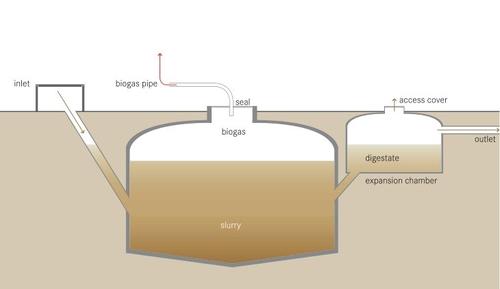Anaerobic digestion is a bacterial decomposition process that stabilizes organic wastes and produces a mixture of methane and carbon dioxide gas (biogas). The heat value of methane is the same as natural petroleum gas, and biogas is valuable as an energy source. Anaerobic digestion is usually carried out in a specially built digester, where the content is mixed and the digester maintained at 35 °C by combusting the biogas produced. After digestion the sludge is passed to a sedimentation tank where the sludge is thickened. Biogas is collected from the digester. The thickened sludge requires further treatment prior to reuse or disposal. Anaerobic digestion can also be carried out at a slower rate in an unmixed tank or pond. Covering is usually by a UV resistant plastic sheet, because of the large area needed to be covered, and biogas is collected from the top of the sheet. (UNEP 2000)
